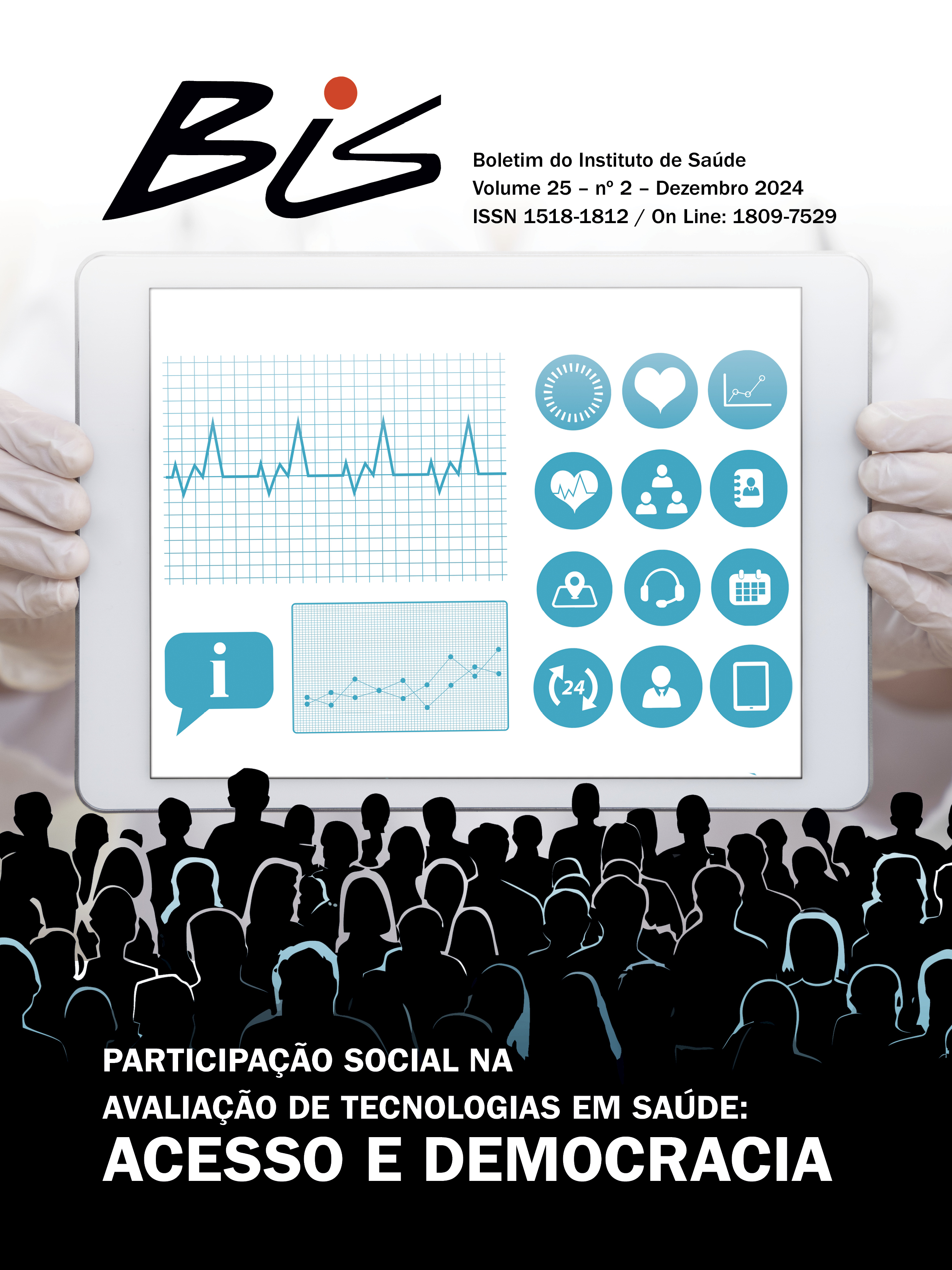Abstract
The 1988 Constitution marked Brazil's democratization by recognizing and valuing social rights, incorporating social participation
not only as state oversight but as a fundamental element of social policies. Law No. 8,142/90 established community participation in
the management of the Unified Health System (SUS), ensuring Health Conferences and Health Councils as spaces for deliberation
and social control. Associative movements, or organized coalitions of individuals, including patient organizations, have driven this participation, standing out in the mobilization for recognition and the inclusion of demands on the governmental agenda. Since 2010, there has been an increase in movements led by patients and their families, challenging the paternalistic model of care. This study aims to understand the profile of patient associations and social movements regarding forms of social participation in health across the Executive, Legislative, and Judicial branches, as well as the demands and needs to enhance this participation. This information was collected through a structured questionnaire, divided into five thematic blocks, using the Survey Monkey platform. The analysis shows that, while there is significant interest and interaction, gaps still persist in understanding interactions with the government and in identifying the needs to strengthen public policies.
References
1. Brasil. Lei nº 8.142, de 28 de dezembro de 1990. Dispõe sobre a participação da comunidade na gestão do Sistema Único de Saúde (SUS) e sobre as transferências intergovernamentais de recursos financeiros na área da saúde e dá outras providências. Diário Oficial da União. 31 dez 1990; Seção 1:25694
2. Krenak A. Reflexão sobre a saúde indígena e os desafios atuais em diálogo com a tese Tem que ser do nosso jeito: participação e protagonismo do movimento indígena na construção da política de saúde no Brasil. Saúde Soc. 2020; 29(3): e200711.
3. Silva IOG, Hennington EA. Movimentos sociais e políticas públicas: atuação da ONG HTLVida. Saúde Ssoc. 2022; 31(4):1-14.
4. Gutiérrez AC, Campos GWS, Cunha MS, Mattos MP, Costa os, Silva ROL, et al. Coletivos organizados, ativismo social e narrativas da pandemia em territórios vulneráveis na cidade do Rio de Janeiro, Brasil. Ciênc saúde colet [internet]. 2023 [acesso em 20 mar
2024];28(12):3533–42. Disponível em: https://www.scielo.br/j/csc/a/BNzbBVYm5BY5WG6cr6ndHyc/?format=pdf&lang=pt
5. Freitas CAM, Prado NMBL, Carvalho VN, Kochergin CN, Santos AM. Os movimentos sociais e a gênese de propostas para a saúde da população LGBT na Bahia, Brasil (1979-2014): disputas iniciais e alternativas possíveis. Ciênc saúde colet [internet]. 2024;29(2):e02222023. Disponível em: https://www.scielo.br/j/csc/a/5nnYKJ9vxVrRXWNMvFbgXCh/?format=pdf&lang=pt
6. Buse K, Mays N, Walt G. Interest groups and the policy process. In: Buse K, Mays N, Walt G, organizadores. Making Health Policy. 2. ed. Open University Press, 2012. p. 121-122. (Tradução livre).
7. Gama CAP, Figueiredo MD. Democracia sanitária: avanços e resistências no processo de participação dos pacientes/ usuários no sistema de saúde francês. São Paulo: Saúde soc. 2021;30(1):1-13.
8. Rich JAJ. Ativismo Patrocinado pelo Estado: burocratas e movimentos sociais no Brasil democrático. Rio de Janeiro: Editora
Fiocruz; 2021.
9. WHO - World Health Organization. Implementing citizen engagement within evidence-informed policymaking: an overview of purpose
and methods. Geneva; 2022.
10. Oliveira VGSB, Rodrigues, CG. Caderno Qualifica SUS. Unidos pela Vida – Instituto Brasileiro de Atenção à Fibrose Cística [internet], 2023. Disponível em: https://unidospelavida.org.br/cartilhas/
11. Ramos S, Machado F, Silva S. Redes de tratamento e as associações de pacientes com doenças raras. Cienc Saude Colet [Internet]. 2018 Out [acesso em 24 mai 2024];23(10):3399-3410. Disponível em: https://www.scielo.br/j/csc/a/txm6PmV3jtjPQhp7wD8D5rw/#
12. De Paula BLS, Santana IJA. Políticas do corpo: associações de pacientes e reconfigurações da cidadania. Physis [internet]. 2021;31(1). Disponível em: https://www.scielo.br/j/physis/a/ttcMDf4GtFbdQhYj8fB5Cnv/
13. Machado FV, Rech M, Pinto RS, Romão WM, Matias MMM, Freitas GC, Leles FAG, Kujawa H. Participação em saúde nas Américas: mapeamento bibliométrico da produção, impacto, visibilidade e colaboração. Ciênc saúde colet. 2023;28(2):487-500.

This work is licensed under a Creative Commons Attribution 4.0 International License.
Copyright (c) 2024 Verônica Del Gragnano Stasiak Bednarczuk de Oliveira, Cristina Guimarães Rodrigues, Beatriz Bertuzzo Möller, Marise Basso Amaral, Marilis Dallarmi Miguel
